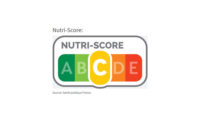Dairy foods are nutrient-dense
Consumers are confused about what constitutes a well-balanced diet

I recently received an email with the subject line: “A well-balanced diet consists of a taco in each hand … on the beach (can’t forget that vitamin D).” The line was memorable and highlighted the fact that modern consumers have some novel ideas about what constitutes a healthy diet.
When I was in college, a well-balanced diet included foods from the four basic food groups: bread (taco shell), meat (ground beef or fish), veggies and fruits (lettuce and mango salsa) and dairy (shredded Mexican cheese). So maybe a taco in each hand does qualify as a well-balanced diet!
Many fad diets — paleo, keto, lemonade, just to name a few — exclude major food groups, resulting in a shortfall of essential nutrients. One concept that is often lost in all the noise about what constitutes healthy eating is nutrient density.
Understanding nutrient density
The International Food Information Council (IFIC) Foundation’s “2019 Food and Health Survey,” https://tinyurl.com/y2wued5p, revealed that only one in four consumers understand “nutrient density.” A full one-third of the respondents in the study had not heard of the concept, but were interested in learning more. The study noted that younger consumers (18-49) were more familiar with the concept than were consumers over 65.
“Nutrient-dense foods, which include beverages, must provide a high level of nutrition for their calories,” said Ashley Rosales, RDN, program director of community health and nutrition science at Dairy Council of California. “Dairy foods such as milk, yogurt and cheese are considered nutrient-dense foods because they provide a high level of nutrition for relatively low calories. Additionally, research confirms that milk, yogurt and cheese offer a unique package of nutrients — calcium, vitamin D, potassium, protein and more — that work together to provide multiple health benefits, including optimal growth and development in children and reduced risk of chronic diseases like type 2 diabetes.”
According to the “Scientific Report of the 2015 Dietary Guidelines Advisory Committee,” https://tinyurl.com/y3g9m8m9, the dairy group is also a proportionately greater contributor to levels of magnesium, phosphorus, zinc, selenium, vitamin A, riboflavin, vitamin B12 and choline than to calories in the selected dietary pattern. Removing the dairy group from the diet results in shortfalls in calcium, vitamin D, potassium and choline. In 2016, FDA added choline, a beneficial but lesser-known nutrient, to the Nutrition Facts panel.
Communicating to consumers
Too often, dietary advice focuses on the “unhealthy” components of food — sugar or fat content — while totally ignoring the healthy components. This could lead consumers to avoid chocolate milk, sweetened yogurt and natural cheese.
Eliminating entire food groups is not only unhealthy, it’s also boring. When consumers use a fad diet to lose weight, they often tire of the eating pattern quickly, revert to their former diet, and regain the weight that they lost.
“Consumers typically respond more favorably to messaging that is clear, compelling and relevant,” explained Rosales. “We know that milk and dairy foods are nutrient-dense, but how that is packaged and communicated to consumers is important because they have to come to the same conclusion on their own. To help communicate that dairy foods are nutrient-dense, dairy companies and health educators can simplify their messaging to ensure it resonates with the consumer, provide consumers with a clear explanation of dairy’s value and health benefits, and provide real-life examples using scientific evidence to align the messaging with the consumers’ values.”
According to a report from the American Academy of Pediatrics, https://tinyurl.com/yxv4xy2j, emphasis on nutrient-dense foods allows an approach that lets all foods fit into the diet, as long as portion and proportion are appropriate.
“Sounds like what your grandmother always told you, doesn’t it?” the report points out.
Looking for a reprint of this article?
From high-res PDFs to custom plaques, order your copy today!








